# Antique, V. V. Rare, Sabatier RUE ST. HONORE 84 Chef's Knife 8.9 (226 mm)

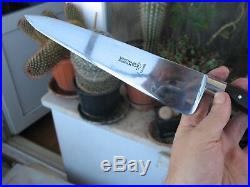
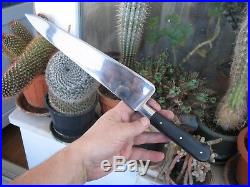
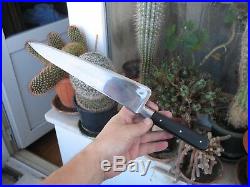
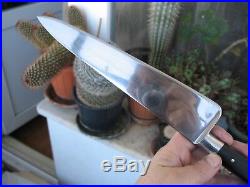
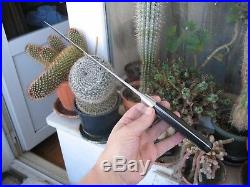
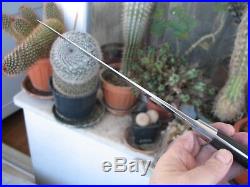
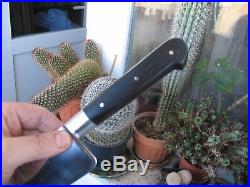
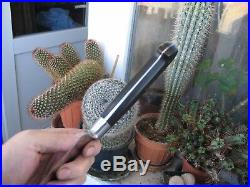
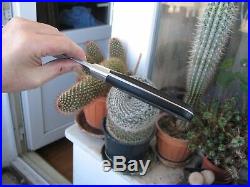
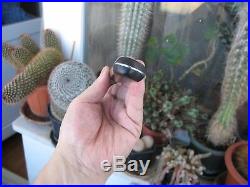
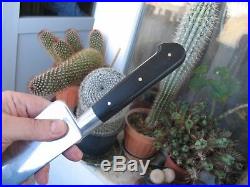

Antique, Extremely Rare, Sabatier RUE ST. HONORE 84 Chef's Knife 8.9 (226 mm). 8.9 (226 mm) = Blade (just the blade); Carbon Steel; Made in France. Very Sharp; Professionally, Carefully Sharpened. The steel is very, very easy to sharpen and keeps its sharpness very good - a secret of the French artisans. No cracks on the beautiful ebony handle. Blade + handle = very finely polished. No gaps between ebony and steel. An image of a hand [company motto: ART A MAIN - HANDMADE ART]. Be careful not to put it into the washing machine.
A lways hand wash it. About "Sabatier": Thiers is the place where as far as I know all the Sabatier knife making companies are located.
Thiers is as Sheffield is for England or Solingen for Germany. France has also many other knife making centers as Paris or Nogent (PERNOT was located in Nogent). Sabatier it is not a brand. Sabatier is like "Smith" in English. It is a very common name in that town of France (Thiers). It happened to be included in some names of the knife making companies. But there are a lot of others in Thiers at the same level for example: DUMAS; MASSOPTIER-ISSARD; ASTIER - PRODON; BARNERIAS Frères; COTTE; BATISSE etc. Every body know what a Sabatier means. I can not make a top of the Sabatier brands because I can not differentiate them.I was never disappointed by a Sabatier knife or by a knife of the same quality made in Thiers or other France centers of knife making companies (like Nogent or Paris). There are so many brands in France! Or more accurate there use to be because a lot of the little brands disappeared in time and big, mass production factories replace them. If you want a good French knife stay away from the mass production and choose a knife made by a company which use a lot of skilled craftsmen. Sometime a big company produces mass production knives but also have some lines made by artisan (which are more expensive) - see for example our days SABATIER K.
You can also choose knives made by old disappeared companies which made their knives including a lot of artisanal labor. For example the disappeared brand Sabatier St Honore 84 has a hand on its logo because their motto was. "Art à Main" (Handmade Art). I have a small sharpening business and I like to think I know what a sharp knife is. It was sharpened only on Japanese water stones.
No sparkles, the stones are continuously impregnated and sprayed with water. That means no damaging of the original steel quality (like hardening). The last stone is an 8,000 grit which means mirror polish. I have sharpened it manually on Japanese water stones (using a lot of water which means no sparks - in order to maintain the original blade properties - like hardening). Last stone 8000 grit - mirror finish, razor sharp.
I have a little sharpening business which means that the knife is properly sharpened - I like to believe. The Japanese water stones can be used only when they are wet and continuously sprayed with water. AT THE POST OFFICE YOU GOTTA PRODUCE AN I. IN ORDER TO GET YOUR KNIFE (PARCEL/ENVELOPE) AND TO SIGN FOR IT. Carbon steel knives are capable of being sharpened to razor-like keenness, and hold an edge for a very long time. The trade off for this wicked sharpness is oxidation. That means they could rust.Looked after properly, however, they will develop a patina long before any rust can take root. You will find, as I have, that these blades will change colour becoming grey or even black as they are used. This is just the patina developing.
Consider how a copper roof becomes green over time, or a leather jacket becomes more beautiful as it ages. This is an oxidation process that occurs with carbon steel knives, once the patina has developed the surface will no longer be susceptible to further corrosion (rust). Should rusting occur simply use a kitchen scrubby (not copper or steel wool as this will scratch the surface) and warm, soapy water to remove anything that looks like rust. Its impossible to avoid some discoloration with carbon steel knives. As you use them on foods like onions, tomatoes or other acidic food you will notice that a greyish hue will develop.
This is to be expected, just wash with warm water and keep dry. My carbon knives have a strong patina that I acknowledge as a reward for using exceptional knives, each blade being unique. And remember don't be scared using a carbon steel knife. It's just iron and carbon.
Some people are taking iron pills for their health. The item "# Antique, V.
HONORE 84 Chef's Knife 8.9 (226 mm)" is in sale since Thursday, October 25, 2018. This item is in the category "Collectibles\Kitchen & Home\Kitchenware\Utensils\Cutlery". The seller is "cristi57cristian" and is located in Pitesti, Arges. This item can be shipped worldwide.
- Country of Manufacture: France
